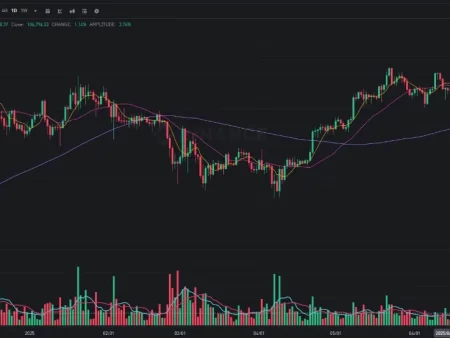In 2025, combining cheap DeFi coins with staking is a smart way to earn passive income from low-cost crypto assets. These tokens offer access to DeFi yields without needing a large investment.
At CryptoBestExchange, we track the best low-priced staking coins and update them regularly. For a broader view, check out our Best Cheap Crypto to Buy Now guide.
Table of Contents
What Makes a DeFi Coin Cheap But Valuable?

When we talk about cheap DeFi coins, we’re usually referring to tokens that are priced under $1 or under $10 — but price alone doesn’t determine value. A low price per token might make a coin accessible, but what truly matters is its market capitalization, utility, and growth potential.
So, what separates undervalued gems from low-quality tokens?
🔍 Key Factors That Make a Cheap DeFi Coin Valuable:
- Market Cap: A DeFi token priced at $0.50 may seem cheap, but if it has a $5 billion market cap, it may already be fully valued. Look for coins with both low price and low-to-mid market cap.
- Total Value Locked (TVL): This is a strong metric for DeFi coins. Higher TVL indicates real usage and liquidity. Valuable cheap coins are often integrated into lending, farming, or liquidity protocols.
- Staking APY: A high and sustainable APY can make a DeFi coin worth staking, especially when the returns come from real protocol revenue or token utility — not just inflation.
- Decentralization & Governance: Look for projects where the community controls the protocol. Tokens that grant governance rights and are used to vote on proposals tend to have longer-term value.
- Ecosystem Growth: Undervalued DeFi coins often support broader ecosystems, like stablecoins, DEXs, bridges, or derivatives protocols.
These are the core traits that make DeFi tokens with low entry price more than just speculative bets — they become strong assets for long-term portfolios.
Top Cheap DeFi Coins That Support Staking (2025 Picks)
Looking for cheap DeFi coins with staking potential in 2025? Below is a curated list of top-performing, low-cost tokens that support staking either directly on-chain or via centralized exchanges. These assets offer a mix of high yield, strong ecosystems, and accessibility — ideal for those building a DeFi income strategy.
🔹 Algorand (ALGO)
- Price: $0.29 (as of July 2025)
- Where to Buy: Binance, Coinbase, Kraken, KuCoin, Bitget
- How to Stake: Native staking via Pera Wallet or governance portal
- APY: 6–8% (protocol-based)
ALGO is a Layer 1 blockchain focused on sustainability and real-world enterprise use. It’s also one of the most active assets in top altcoins under $1 with a long-term staking mechanism built into its protocol.
🔹 Avalanche (AVAX)
- Price: ~$22.9
- Where to Buy: Binance, Bybit, OKX, Coinbase
- How to Stake: On-chain via Avalanche Wallet or CEX
- APY: 7–9% (validator-based, depending on lock period)
AVAX powers a scalable multi-chain Layer 1 network. Despite a slightly higher price, it’s still considered among cheap crypto by category, especially for high-yield DeFi investors.
🔹 Osmosis (OSMO)
- Price: ~$0.18
- Where to Buy: MEXC, Keplr Swap, Osmosis DEX
- How to Stake: On-chain via Keplr Wallet (Cosmos ecosystem)
- APY: 8–12% (adjusted dynamically)
A core DEX in the Cosmos ecosystem, OSMO offers one of the highest APYs among undervalued DeFi coins and is deeply integrated with IBC-compatible projects.
🔹 Sei (SEI)
- Price: $0.36
- Where to Buy: Binance, Bybit, KuCoin, Gate.io
- How to Stake: On-chain via Leap Wallet or CEX like Binance
- APY: ~7–10%
As a high-performance Layer 1 optimized for trading, SEI is a newer entrant in the DeFi space with solid staking rewards — great for those tracking crypto by category – DeFi narratives.
🔹 Injective (INJ)
- Price: ~$13.97
- Where to Buy: Binance, Coinbase, Bybit
- How to Stake: On-chain via Keplr or DEX staking
- APY: 14–18% (among the highest)
Built as a DeFi-native L1 with built-in order book support, INJ is widely considered a DeFi coin worth staking, offering high utility and real usage in derivatives trading.
🔹 Sui (SUI)
- Price: ~$4.2
- Where to Buy: Binance, OKX, KuCoin, Bybit
- How to Stake: On-chain via Sui Wallet or delegate to validators
- APY: 5–7%
A fast-growing Layer 1 with strong community support and ecosystem funding, SUI offers native staking and is gaining ground as one of the top DeFi tokens with low entry price.
🔹 Near Protocol (NEAR)
- Price: ~$2.83
- Where to Buy: Binance, Coinbase, Kraken
- How to Stake: Near Wallet or CEX
- APY: ~10%
Although just over $1, NEAR remains a strong candidate for DeFi staking. It focuses on developer experience, scalability, and Web3 integrations — ideal for long-term income strategies.
🔹 Kava (KAVA)
- Price: ~$0.44
- Where to Buy: Binance, OKX, KuCoin
- How to Stake: Kava App or CEX
- APY: 8–12%
Kava is a DeFi-focused chain offering lending, stablecoin, and cross-chain liquidity solutions. Its staking rewards are competitive, and it’s often featured in cheap DeFi coin discussions.
🔹 Velas (VLX)
- Price: ~$0.0019
- Where to Buy: KuCoin, Gate.io, Bitrue
- How to Stake: VLX Wallet or delegate to validator nodes
- APY: ~10–20% (varies by pool)
VLX is a high-speed Layer 1 combining Solana and EVM compatibility. It’s one of the most affordable coins offering real on-chain staking returns.
These assets are ideal for building a diversified staking portfolio that balances high APY, long-term utility, and low entry prices. For more picks outside of DeFi, check our guides on top altcoins under $1 and crypto by category – DeFi, AI, Web3.
How to Stake Cheap DeFi Coins
Staking cheap DeFi coins is one of the easiest ways to earn passive income in crypto — even if you’re just starting out. Here’s a quick guide to help you stake confidently and securely.
🔰 Quick Guide for Beginners
- Choose a staking-supported coin (e.g., ALGO, SEI, SUI, KAVA).
- Decide where to stake: on-chain via wallet, or off-chain via a centralized exchange.
- Hold the token in a supported wallet or platform.
- Select a validator or staking pool, or opt into fixed staking on an exchange.
- Track your rewards regularly, and re-stake if available.
🏦 Centralized vs Decentralized Staking
| Option | Pros | Cons |
|---|---|---|
| CEX Staking | Easy to use, no wallet setup needed | Custodial, lower yields in some cases |
| On-chain Staking | Higher APY, more control | Requires wallet setup and more steps |
CEX platforms like Binance, Bybit, or KuCoin offer simple staking interfaces. On the other hand, staking on-chain gives you full control and sometimes access to governance or bonus rewards.
🧰 Recommended Tools & Platforms
- Ledger – Best for cold staking and security
- Keplr Wallet – Ideal for Cosmos-based DeFi coins (e.g., OSMO, INJ)
- Lido Finance – Liquid staking for ETH, MATIC, SOL, and others
- Trust Wallet / MetaMask – Flexible for most ERC-20 or EVM chains
- Binance, Bybit, OKX – Centralized, beginner-friendly staking access
🔒 Security Tips When Staking Low-Cap Coins
- Always double-check validator addresses and pool legitimacy
- Avoid staking all your funds in one pool or platform
- Store coins in non-custodial wallets if possible
- Use hardware wallets like Ledger for large amounts
- Be cautious of too-good-to-be-true APYs on unknown platforms
Want to monitor DeFi staking rewards and token price swings in real time? Check out our full guide on Track Cheap Crypto in Real Time for tools, charts, and alerts.
Benefits of Staking Cheap DeFi Coins
Staking cheap DeFi coins isn’t just about earning rewards — it’s a strategic way to grow your crypto portfolio with lower risk and higher engagement. Here’s why more investors are turning to staking in 2025:
💰 Earn Passive Income While Holding
Instead of letting tokens sit idle, staking allows you to earn yield just by holding. It’s an easy way to generate consistent returns, even during sideways markets.
📈 Compound Growth Potential
Many platforms let you re-stake your earnings, creating a compounding effect over time. This strategy can significantly boost your long-term gains with minimal effort.
🗳️ Participate in Governance and Airdrops
Staked tokens often grant governance rights, letting you vote on protocol changes. In many cases, active stakers are also eligible for future airdrops or bonus incentives.
🔄 Diversify Income Beyond Just Trading
Staking provides a reliable income stream that doesn’t depend on price speculation. This is especially valuable during bear markets or when you’re taking a long-term approach.
Risks of Staking Low-Priced DeFi Coins
While staking cheap DeFi coins can offer attractive yields, it also comes with several risks that investors — especially beginners — should consider before locking in their funds.
🧱 Smart Contract Vulnerabilities
Many DeFi platforms rely on smart contracts that may not be fully audited. Bugs or exploits can lead to loss of funds, especially on newer or lesser-known protocols.
💧 Low Liquidity & APY Fluctuations
Low-cap tokens often have limited liquidity, making it harder to exit positions. In addition, staking APYs can change rapidly depending on network usage and token inflation.
⚠️ Validator Slashing (Self-Staking Risk)
If you’re staking directly with a validator (e.g., on Cosmos or Near), misbehavior or downtime can result in slashing, where a portion of your stake is penalized.
📉 Inflation Risk for New Coins
Some newer DeFi tokens offer high APY rewards by printing more tokens — which can dilute value over time. Always check tokenomics and emission schedules.
If you’re unsure how to evaluate low-priced staking tokens, check out our full guide on How to Find Undervalued Crypto — where we break down research tips and metrics to spot the real gems.
Final Thoughts: Should You Stake Cheap DeFi Coins in 2025?
Staking cheap DeFi coins is a smart, accessible way to generate passive income — especially for retail investors, long-term holders, and those seeking alternatives to active trading.
This strategy is best suited for:
- Investors looking to earn yield while holding tokens long-term
- Those with limited capital but high engagement in the DeFi space
- Users interested in learning how protocols work through governance and staking participation
That said, staking should be seen as one part of a diversified strategy — not your entire portfolio. Balance high-risk staking coins with more stable assets like ETH or BTC, and always be aware of changing APYs, token inflation, and smart contract risk.
🔎 As always, do your own research (DYOR) before locking up your tokens — especially when staking newer or low-cap assets.
Related Reading
Want to explore more beyond DeFi staking? Check out these helpful guides:
- Meme Coins Under $0.01 – Explore high-risk, high-reward meme coin plays
- Crypto by Category – AI, Web3, Gaming – Discover top low-priced coins in emerging sectors
- Track Cheap Crypto in Real Time – Tools to monitor prices, APYs, and market trends
Frequently Asked Questions About Cheap DeFi Coins with Staking
What are cheap DeFi coins with staking?
Cheap DeFi coins with staking are low-priced tokens (typically under $1 or $10) that allow holders to earn passive income through staking rewards, either on-chain or via centralized exchanges.
Is staking DeFi tokens safe?
Staking is generally safe on reputable platforms, but there are risks including smart contract bugs, validator slashing, and APY fluctuations. It’s important to do your own research (DYOR) before staking.
What platforms support DeFi coin staking?
You can stake DeFi tokens on centralized exchanges like Binance, Bybit, and KuCoin, or through non-custodial wallets like Ledger, Keplr, and MetaMask connected to staking protocols or validators.
What is a good APY for staking DeFi coins?
APYs vary by project, but a good range is typically 5%–15%. Some coins offer higher yields, but those may come with greater volatility or inflation risk. Always assess the sustainability of rewards.
How can I track the performance of cheap staking coins?
You can use platforms like CoinMarketCap, CoinGecko, StakingRewards, and TradingView to monitor price, market cap, and APY changes. For more, see our guide on tracking cheap crypto in real time.






 Crypto Trading Platforms & Apps
Crypto Trading Platforms & Apps Best Crypto Trading Apps & Platforms
Best Crypto Trading Apps & Platforms Crypto Futures & Leverage Trading
Crypto Futures & Leverage Trading Buying & Selling Crypto
Buying & Selling Crypto Automated & Software Trading
Automated & Software Trading